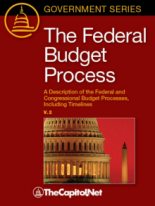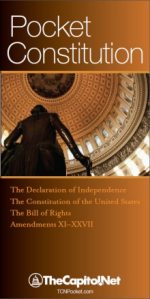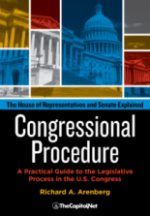Congress has utilized reconciliation more often than not, beginning in 1980. This special type of legislation is often used for implementing significant budget policies and for bringing existing revenue and spending law in line with policies in a budget resolution. Although reconciliation is an entirely optional process, it has been increasingly used in recent years.

There are two stages to the reconciliation process: the adoption of reconciliation directives and the enactment of reconciliation legislation. Specific procedures for reconciliation can vary from year to year.
Reconciliation can provide an avenue for changing the amount of revenues, outlays or budget authority that is generated by existing law. In a rare number of cases, reconciliation has also been used for adjusting the public-debt limit.
The reconciliation process always begins with a directive in a budget resolution that instructs designated committees to recommend legislation that will change existing law. There are three components to such directives. First, they serve to identify the committee or committees that are directed to recommend legislation. Second, they specify the precise amounts of changes in outlays or revenues that are to be achieved by the changes in law. Third, directives typically establish a deadline by which committees must make recommend changes in law.
The directives do not specify the way in which the changes are to be made, precisely which laws are to be changed, or the programs that are to be affected.
Committees maintain the discretion to determine the legislative changes that are to be recommended. While committees are not bound by any program change recommendations, it is expected that the committee will recommend legislation that will produce the amounts noted in the reconciliation directives.
Whenever multiple committees in the House and the Senate are subject to reconciliation directives, proposed legislative changes will be consolidated into an omnibus bill by the Budget Committees. The Byrd rule was adopted in 1985 as a way of curbing practices such as the inclusion of provisions that had no budgetary effect or that violated the jurisdiction of another committee.
Debate on reconciliation legislation by the Senate is limited to twenty hours. The Senate may choose to continue consideration of amendments, appeals and motions following those twenty hours, but no further debate is allowed on the subject.
See Reconciliation (CongressionalGlossary.com)
Courses
- Congressional Operations Briefing – Capitol Hill Workshop
- Drafting Federal Legislation and Amendments
- Writing for Government and Business: Critical Thinking and Writing
- Custom, On-Site Training
- “Federal Budgeting” a Five-Course series on CD
Publications

The Federal Budget Process 2E

Pocket Constitution

Citizen’s Handbook to Influencing Elected Officials: A Guide for Citizen Lobbyists and Grassroots Advocates

Congressional Procedure
CongressionalGlossary.com, from TheCapitol.Net
For more than 40 years, TheCapitol.Net and its predecessor, Congressional Quarterly Executive Conferences, have been teaching professionals from government, military, business, and NGOs about the dynamics and operations of the legislative and executive branches and how to work with them.
Our custom on-site and online training, publications, and audio courses include congressional operations, legislative and budget process, communication and advocacy, media and public relations, testifying before Congress, research skills, legislative drafting, critical thinking and writing, and more.
TheCapitol.Net is on the GSA Schedule, MAS, for custom on-site and online training. GSA Contract GS02F0192X
TheCapitol.Net is now owned by the Sunwater Institute.
Teaching how Washington and Congress work ™

